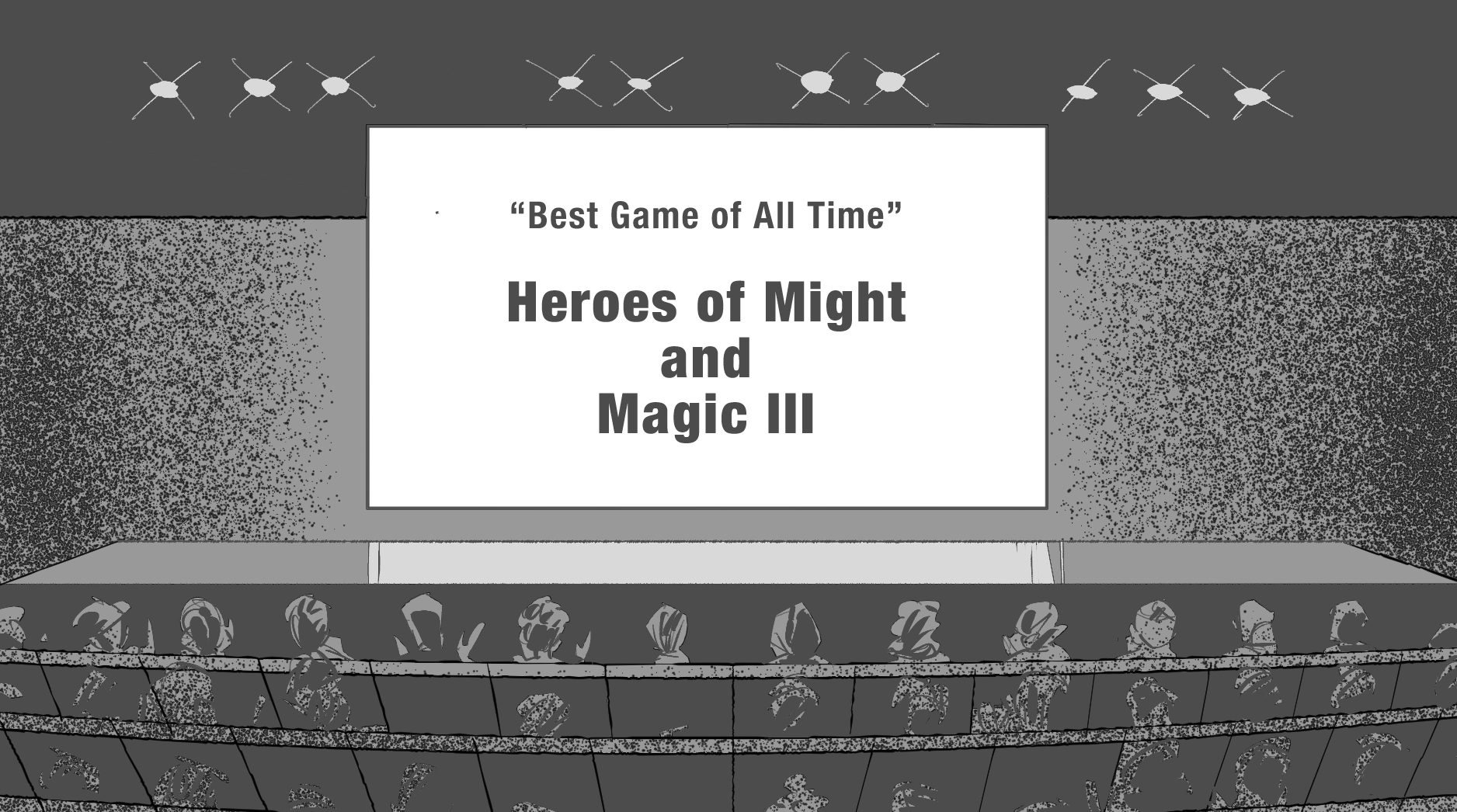If you’re anything like me and love to scroll aimlessly through categories on Twitch, you may have noticed a couple of odd ones out. Games that catch your attention.
For me, it’s Farming Simulator nested between two AAA games, House Flipper surrounded by fast-paced MMOs or Heroes of Might and Magic III. It’s one of the oldest games in top 100 categories on Twitch, and it’s consistently watched by more people than Red Dead Redemption 2 or Assassin’s Creed Odyssey.
Let me say this again: more people watch Heroes of Might and Magic III than Red Dead Redemption 2, a game that sold over 24 million copies in the nine months since its release, or Assassin’s Creed Odyssey, which at one point in October hit 62,000 concurrent players. Heroes of Might and Magic III, a turn-based strategy game released in 1999. To put this in perspective, that’s when I Want It That Way by Backstreet Boys came out, but you wouldn’t necessarily expect it to hop back onto the charts in 2020.
So, what’s the deal with Heroes of Might and Magic III?
The story behind it involves perfecting a franchise, the rise of game piracy, localisation, Eastern European markets and a powerful word-of-mouth marketing campaign that no marketing exec ever had a say in.
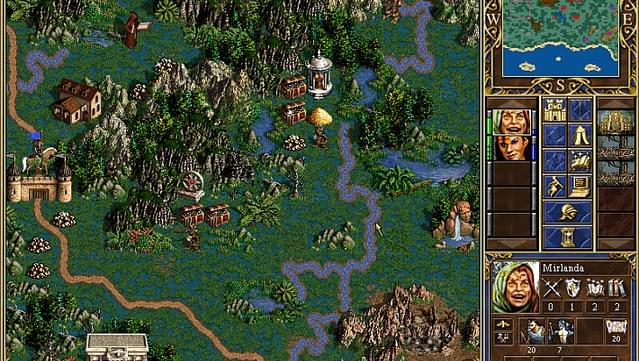
It all started with a brilliant RPG series called Might and Magic, created by Jon Van Caneghem of New World Computing. The first Might and Magic game came out in 1986 to critical acclaim, partly thanks to first-person 3D graphics and a Dungeons & Dragons inspired party system. Sequels followed, and by 1999 Might and Magic series sold over 4 million copies.
Its success inspired New World Computing to create various spin-offs of Might and Magic: Crusaders of Might and Magic, Legends of Might and Magic, Warriors of Might and Magic and, most notably of Might and Magic, Heroes of Might and Magic. Of Might and Magic, obviously.
With the “throw ’em up against the wall and see what sticks” philosophy, New World Computing got something that stuck: Heroes of Might and Magic. The first instalment came out in 1995 to a very warm reception from the gaming press and sold enough units to warrant a part two. No time was wasted — Heroes of Might and Magic II followed a year later, quickly selling out in all stores which pressured retailers to reorder the product.
New World Computing was dedicated to giving their fans what they wanted, and it shows. The HoMM formula truly reached its sweet spot with Heroes of Might and Magic III. It was an improvement on all fronts: sound design, custom map building, multiplayer, campaigns, factions and gameplay.
Enter…The perfect Might and Magic game
Now, imagine it’s 1999, and you just turned on your 128mb RAM, 400MHz PC with an astonishing 10 GB of hard drive space and two (!) optical drives. After a bit of a wait, you find the HoMM3 icon on your desktop.

You’re greeted by this very colourful and heroic-looking menu:
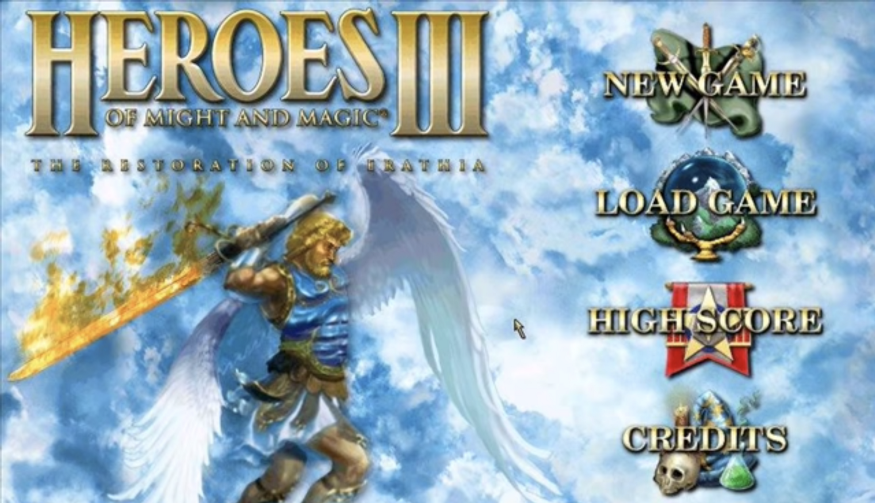
Start a new game. Pick your scenario (or play on a random map), select your difficulty, and after a couple of seconds, find yourself on a map filled with resources, creatures and enemies.
Your hero is standing in front of a small settlement that belongs to you. In a couple of hours, if you play your metaphorical cards right (no actual cards involved), this settlement will become a full-blown town with various buildings producing various resources and fighter units. Your lone hero will now be a general of an army of knights, peasants and mythological creatures. There will be more heroes among your forces, too: exploring the map, taking over enemy castles, searching for artefacts, claiming mines, collecting resources and encountering random stuff.
There’s a lot of layers to the game, both literally and figuratively, as the action takes place underground and above ground on most maps. The primary layer is turn-based exploration. Your hero can only move a certain distance within one turn (one day in-game time). Every seven days, resources and fighter units renew. More monsters show up on the map, your enemies grow stronger.
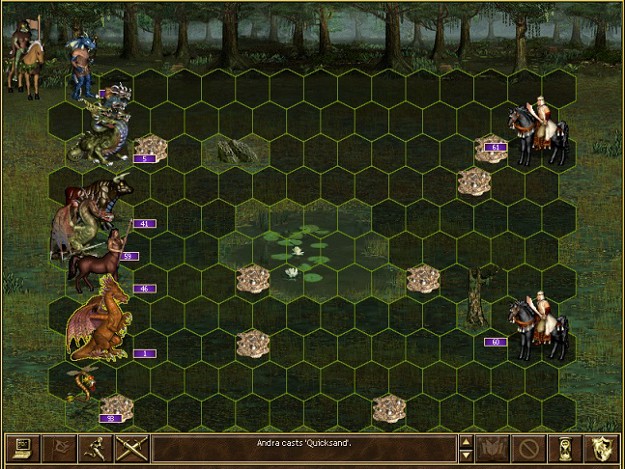
You need to find balance in allocating your fighter units to defend your castle or to travel with your hero, as you can be attacked by a rival at any time. Combat is tactical and yet fast-paced. You need to use all your might and your magic to advance your fighter units on a grid map and attack enemy units. Each unit in the game is different: grasping the basics of combat is quick, but mastering it takes long. It’s satisfying, though. You will do better with each game you play, and learning never feels like a chore.
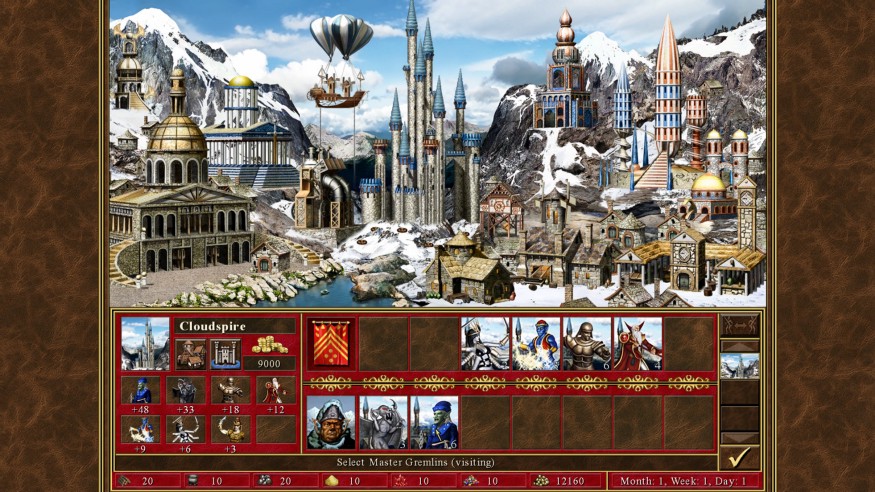
Another layer is managing and growing your town. It’s where your fighter units come from, where you train your heroes in magic, and where most of your income comes from as well. Towns from different factions differ in buildings and units. The more towns you have, the more money you get each day, and the more units you can buy each week. If you lose your last town and can’t get it back or find another one in seven days, it’s game over.
There’s still more: training your heroes, sabotaging other players, finding the Holy Grail, fighting rare creatures, solving mysteries, sailing the sea…
Sounds like it’d be a perfect game to play with your friends? Well, you’d never guess — you can! LAN multiplayer is good fun, but playing together turn-by-turn on one PC is where the game really shines. It’s called the hot-seat mode, named after how disgustingly warm the only chair in front of the computer felt after you and up to seven other people sat on it for hours. Rules are simple — you swap every turn, until someone wins (or you give up).
Replay value is almost endless: with campaign and multiplayer modes, different factions to choose from and randomly generated maps, the game kept giving (and its players were entertained). This was key in the nineties. In 1998 only 26.2% of US households had access to the internet, but 42.1% owned a PC. There were a lot of people with stationary computers, firmly offline, who’d appreciate a game keeping them occupied for longer.
I asked Polish retro gaming Youtuber Archon if he remembers his first moments with the game:
I had been a huge fan of the series ever since HoMM2 in the 90s, so when the third game was about to hit stores, I had my friend find a demo of it. I didn’t have a PC of my own back then, so we spent entire afternoons replaying the demo at his place, in anticipation of getting our hands on the full product. Of course as soon as we procured an *cough* unlicensed *cough* copy of the game, we geeked out over it for weeks and weeks on end. And then the expansions. We lived and breathed the game at home, in our spare time and at school. Making new maps, finding new tactics and finding scenarios on cover CDs from gaming magazines. Those were the days where we could just sit in front of the computer all day playing hot seat.
Suffice to say, Heroes of Might and Magic III is an excellent game, and reviewers agreed: with 9.1 out of 10 on GameSpot and 9 out of 10 on IGN, HoMM III quickly became the second best selling game of 1999 in the US.
The thing is… It wasn’t the only good game of the 1990s. It wasn’t even the only good game released in 1999. Yet, there are four thousand people watching HoMM III live on Twitch right now, while only three hundred people are watching Red Dead Redemption 2, a game that got 9 out of 10 on GameSpot and 10 out of 10 on IGN barely 8 months ago. Why?
Well, for one, it’s something between 5 PM to 3 AM in different parts of Russia right now. That makes for a whole lot of people relaxing after a long day in front of their screens, currently tuned in to streamers playing Heroes of Might and Magic III. In 2020, that’s where the game thrives.
Successful as it was in the US, the game is all but forgotten there. How come it gets more attention than brand new action-adventure blockbusters on the other side of the globe?
To fully answer this question, I enlisted help from different Eastern Europeans: from friends’ parents to various Russian gamers I interviewed on Twitch chat of a HoMM3 streamer.
Disclaimer: This article focuses on Polish and Russian fans as they have formed the two most significant HoMM communities. Many things I discuss which are true of Poland were also true of Russia at the time, and vice versa. The game was also popular in other Eastern European countries
Play in your language
There’s a reason why Spotify led to a decline of illegal music downloads, or why Steam took pirating games from pretty mainstream to who does that anymore. It’s because often, it’s not about money, but availability. Steam and GOG did what the yOu WoULdN’t DoWnLoaD a CaR campaign couldn’t do, and they did it by providing a solution, not threatening with punishment.
While piracy was at its highest in Eastern Europe, localisation strived to do just that. Localisation is a fancy word for translating software, and it was a big deal. Back then, most Eastern Europeans couldn’t speak English, at least not on a level that would allow them to comfortably play games without translation.
The origin story of everyone’s beloved Polish game dev CD Projekt is a good snapshot of how the gaming industry functioned in Poland in mid to late 1990s. When still students, both founders sold cracked games on Polish markets (which, incidentally, is how a lot of people came across the HoMM series for the first time). When CD Projekt was established, one of their biggest challenges was overcoming piracy, so the company focused their efforts on localisation for most of the 1990s.
Localisation took time and resources, though. Translated software was expensive, and only a chosen few games would get localised, which limited the gaming market. That allowed games released in Polish or Russian to stand out more.
Bluntly put, HoMM3 had a lot less competition in the Eastern European markets than it did in the English speaking world.
But even with less competition, HoMM was far from being the only localised game you could buy in Eastern Europe. So, what happened?
Fantasy & hardware
A marketing executive of a gaming company told me recently their RPGs sell unusually well in Eastern Europe. It came as no surprise to me: I didn’t have data to back this, but I already recognised Eastern Europeans love their RPGs and strategy games, particularly with a fantasy or medieval setting.
But… why?
For starters, Warhammer Fantasy Roleplay was translated to Polish relatively early. It was still 8 years after the worldwide release, but given that there was the whole overthrowing the regime thing going on in 1989 which had most people pretty occupied, 1994 seemed like a pretty good moment to introduce the nation to Warhammer. That meant that all of this fantasy stuff was a well-known concept amongst Polish gamers when HoMM came out.
Side note (which is also a fun fact): the Polish version of Dungeons & Dragons came out in 2000 but never saw the same level of success as Warhammer did, probably due to being at least six years late. Although, that’s not to say that games based on the D&D system weren’t wildly successful in Poland (*coughs* Baldur’s Gate), especially the ones with brilliant localisation (*coughs* CD Projekt).
There was also one other big thing that RPG and strategy games of the 1990s had going on for them. They looked like this:
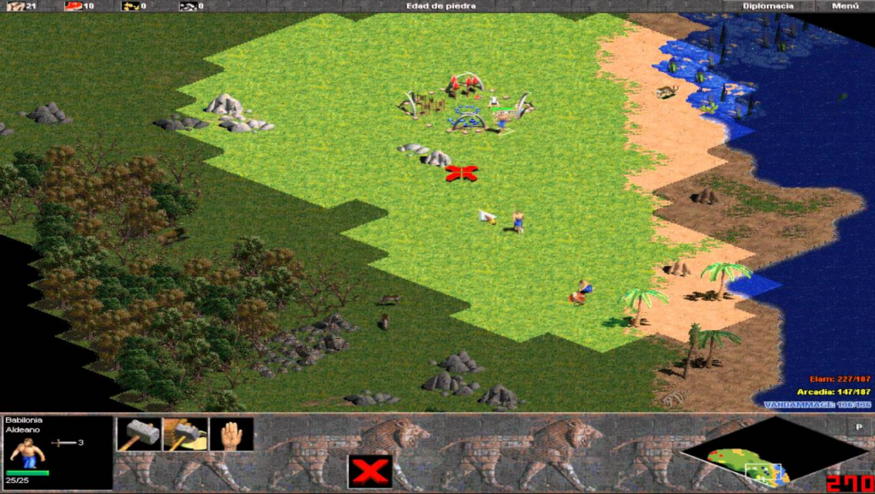
Meanwhile, action-adventure and FPS games looked like this:
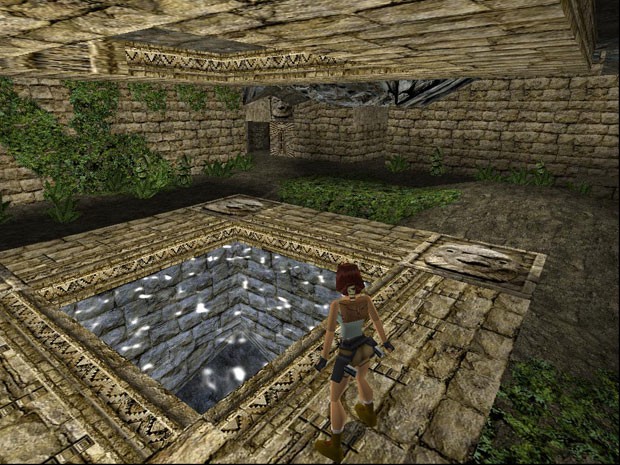
Your PC needed to be way more powerful to handle Tomb Raider, as opposed to something like Age of Empires.
“Why not get a console?” you may ask. Well, PS1 came out in Poland in 1996 (two years after the global premiere) and cost an eye-watering PLN 1599 when median monthly income was PLN 873. So, probably not a very affordable solution.
And that brings us to…
Piracy
Most Eastern European countries were utterly unprepared to enter the free market in the early 1990s. Unprepared on a fundamental level: there were no regulations protecting consumers, nor were there any intellectual property laws. It was the wildest dog-eat-dog version of free-market capitalism, and it took a lot of effort and years of legislation to get it to a manageable level. Still, the mindset prevailed: in 2017, 46% of all software in Poland was still unlicensed.
The retail cost of games in the 1990s didn’t help: median income went from PLN 702.62 in 1995 to PLN 1923.81 in 2000, while computer software was consistently priced between PLN 50 to PLN 200. When Heroes of Might and Magic III came out in 1999, it cost PLN 145, one-eleventh of an average monthly salary. It may have been localised, but still wasn’t very accessible (unless you were filthy rich, of course). Buying a bootleg copy for PLN 30 or even less was very straightforward, though. This was how numerous Eastern Europeans got their hands on the HoMM series.
Archan believes it was piracy that helped HoMM3 achieve that cult status in the long run:
I think it the success of HoMM 3 was a combination of piracy and great distribution tactics in Poland back in the day. Piracy was rampant and that’s how most of us got our fix when legal copies were pretty much nonexistent and prices too high for the average consumer.
But there’s also the other side of the coin. Polish PC Gamers were a bit behind the times technologically so we tended to play older games which would run on our modest hardware. Local publishers took note and started re-releasing many popular titles as part of budget ranges which sold really well! A couple years after launch most game licenses were cheap which allowed for lower pricing. This perpetuated the notion of “cult games” — titles which everybody loved and played (and probably pirated) but could now afford to buy to relive the experience.
Multiplayer and community
In 1999, only 2.1% of the Russian population had access to the internet. In Poland, it was 7.3%. That’s to say that multiplayer games meant something entirely different back then. It wasn’t you and your mate chatting on Discord while getting obliterated by a bunch of eleven-year-olds in Fortnite. It was you and three of your classmates taking turns playing Heroes of Might and Magic III on one PC, with everyone screaming at you to not look at the screen while they’re playing.
I asked Russian HoMM3 fans on Twitch what made the game this good. They all mentioned the hot seat multiplayer. Back then, it was rare to own a PC. I was seven in 2002, and even then barely four or five kids in my class had a computer. With Heroes of Might and Magic III, you could make the best use of your limited resources and play a game with up to 8 players on one PC. Looking back, it’s no wonder it was so popular.
It even got its own devoted modding community.
Good mods can get a game from fun to fun-tastic (sorry). Skyrim, the most obvious example, immediately springs to mind: nobody would play Skyrim in 2020, and sure as hell nobody would pay £39.99 for Skyrim in 2020 (what are you even thinking, Todd Howard) if it wasn’t for the mods. The Elder Scrolls community does God’s work adding new content to a game that would otherwise be a bit old now.
HoMM3 modders took tinkering with a game to a whole new level back then with the release of Heroes of Might and Magic 3½: In the Wake of Gods. WoG (as it’s known in the HoMM3 circles, which, I’ll have you know, I’m a part of now) is a fan-made expansion pack that drastically alters gameplay, adding new options, increasing replayability and customisation. It’s one of the most ambitious fan projects in the history of gaming, and it’s still being updated: the latest blog post on WoG’s official website was added the very day I was typing these words.
Of course, New World Computing wasn’t exactly slacking off either and released two official expansion packs: Armageddon’s Blade & The Shadow of Death. Both pretty good, but let’s face it — can’t really hold a candle to WoG. Sorry not sorry.
Is it really that good?
OK, but is it nostalgia for the olden days, or is HoMM3 really this good?
I’ll answer this one: it’s this good. You can image search HoMM3 (which admittedly is not the prettiest video game ever made) and say that it’s just nostalgia, but it’s not. I swear. Trust me. I enjoyed this game in 2002, I’m enjoying it in 2020, and I’ll probably enjoy it in 2043 if the Earth doesn’t burn down by then.

HoMM3 can be tense, which makes it addictive. You should expect to be attacked at any point in the game. That’s what makes it so fun to watch on Twitch, too. It’s incessantly exciting. This is why, after I’d asked all my questions, I kept watching the stream. I don’t even speak Russian.
I decided to conduct a very scientific test by making my friend Tim play Heroes of Might and Magic III. He loves first-person shooters and action-adventure games. That’s, of course, precisely what Heroes of Might and Magic III is not. Here’s what Tim said, sounding quite surprised:
“I am really enjoying this”.
Case closed. It’s the best game of all times.
In all seriousness, this may just be the final ingredient. A powerful word-of-mouth campaign where converts (like me) would persuade unsuspecting comrades (like Tim) and infect them with a HoMM3 obsession. It’s incurable.
I found out about this game from my dad, who found out about it from his numerous brothers, all of which got their families to try it, too. I told my friends at school, invited them over to play and made them copies of my CD (go on, lock me up). It’ll run on any PC, I was able to say with confidence. Your parents will love this game as much as you do. It’s fun, it’s well translated, it’s cheap. Or even free *police sirens blaring in the distance*.
Why wouldn’t you want to play it in 2020?
If you want to try Heroes of Might and Magic III, get it from GOG, where it comes with expansion packs. The HD remake by Ubisoft on Steam doesn’t have them because of lost source code.
The series lost its spark after Heroes of Might and Magic III. New World Computing & 3DO were bought by Ubisoft after HoMM4 came out, and didn’t develop any of the later instalments. Looks like you can only achieve perfection once.
